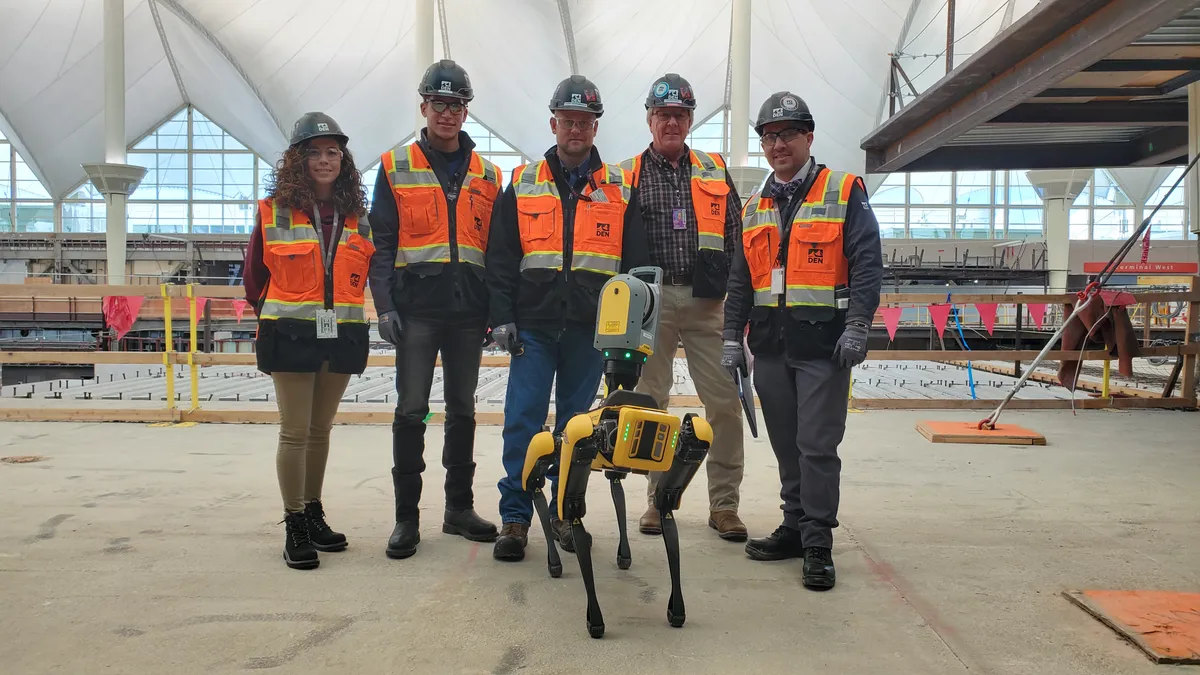Dive Brief:
- After months of testing by multiple general contractors, Boston Dynamics’ Spot the robot dog is being put to use in a real-world scenario, at the Denver International Airport’s multibillion-dollar expansion and renovation project.
- Using a scanner developed by Trimble, Hensel Phelps employees have used the machine to perform multiple scans at the airport’s Great Hall jobsite. Using Boston Dynamics’ Spot Walk application, the robot can travel the same preplanned route repeatedly to document jobsite progress.
- The use of the robot at the Denver Airport started three months ago and is expected to last six months, although the coronavirus outbreak has slowed the progress of integrating Spot onsite, and therefore the regularity with which it can perform scans, according to Drew Rebman, lead VDC engineer for Hensel Phelps.
Dive Insight:
Hensel Phelps teamed up with Boston Dynamics in November to pilot Spot as a 360-degree photographer on the San Francisco International Airport Terminal 1 project. The general contractor has since been using the robot at the Denver Airport's Great Hall, a project it joined when the airport’s original contract with a consortium of builders was terminated last year.
Unlike on the San Francisco project, in Denver Hensel Phelps is using Trimble X7 laser scanners to communicate directly with the Boston Dynamics’ platform. This allows the robot to autonomously stop and perform the scans, as well as to constantly pair the scans together to create one file, as opposed to countless smaller file sizes that need to be pieced together, according to Aviad Almagor, senior director at Trimble.
Using the technology to capture data is important for documentation, especially on a project where work was done by a previous general contractor, Rebman said. As Spot continues to be adopted on jobsites, he said, the technology will be most beneficial to airports, hospitals, universities and other clients with a large amount of mechanical, electrical and plumbing systems in wide-open areas.
For instance, documenting data at the Denver Airport such as all of the MEP within walls will be immensely helpful in the future, Rebman said. He also imagines using Spot, or other autonomous robots, for more passive work. For example, there are three fire watchers on the Denver Airport project, according to Rebman, and having an autonomous robot use a thermal camera to recognize heat signatures could save money and manpower while protecting the jobsite.
In addition to the scans, Trimble plans to try out new applications for the robot, including precise GPS capabilities to ping its exact location on large commercial projects.














